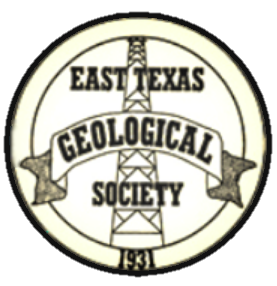FEBRUARY 2020 LUNCHEON MEETING
David A. Ferrill
presents
Mechanical stratigraphic and tectonic controls on faulting and fracturing
in the Eagle Ford Formation and Austin Chalk
11:30 AM Wednesday, February 19, 2020
at the Cascades
4511 Briarwood Road
Tyler, TX 75709
Cost: $25
ABSTRACT
Mechanical stratigraphic and tectonic controls on faulting and fracturing
in the Eagle Ford Formation and Austin Chalk
David A. Ferrill, Kevin J. Smart, Alan P. Morris, Ronald N. McGinnis – Southwest Research Institute, San Antonio, Texas; Dan Lehrmann – Trinity University, San Antonio, Texas; Mark A. Evans – Central Connecticut State University, New Britain, Connecticut
The Eagle Ford Formation and Austin Chalk are heterolithic and mechanically layered reservoirs. Detailed analyses of mechanical layering and structural history in these formations clearly illustrate the first order control of mechanical stratigraphy on nucleation and propagation of brittle deformation features. Analyses of natural exposures along Sycamore and Pinto Creeks near Del Rio, Texas; roadcut exposures across central Texas; and the arroyo at Ernst Tinaja in Big Bend National Park document contrasting deformation styles that reflect the different tectonic histories of these localities.
Early brittle deformation was in many cases dominated by faulting, with faults comprised of both shear and hybrid failure surfaces. Early faults at the Ernst Tinaja outcrops reflect Laramide thrusting. Normal faults at the Sycamore Creek and Pinto Creek exposures, and many other exposures, formed in response to Gulf of Mexico extension. Normal faults in these rocks typically show dip changes (refraction) related to bed-scale differences in the mechanical properties of the rock. Normal-fault dips are steep to vertical through chalk and limestone beds, and moderate through marl, mudrock, and clay-rich ash beds, producing refracted fault profiles.
Opening-mode (extension) fractures developed after faulting in response to Basin and Range extension at Ernst Tinaja, and Gulf of Mexico extension across central Texas. They reflect the strong influence of mechanical layering on nucleation, spacing, vertical penetration, and lateral extent of fractures. Systematic extension fracture networks are best developed in chalk and limestone beds – these fractures tend to be bed-restricted, terminating in adjacent mudrock or ash beds. Abutting of extension fractures against faults and occasional occurrence of extension fractures cutting across faults indicate extension fractures formed after faults.
Fluid inclusion and stable isotope geochemistry analyses of fault-zone veins in the Eagle Ford and Austin Chalk indicate faulting occurred at depths of 1.4 to 2.9 km (4593 to 9514 ft; possibly 4.2 km or 13,780 ft). Fluids include locally sourced saline waters and externally sourced waters and oil in rocks that did not reach oil maturation conditions. In the Eagle Ford Formation and Austin Chalk outcrop belt, inclusions of 30 to >50 API oil are found in fault-zone veins 30 km (19 mi) up dip from the Eagle Ford Formation oil zone. These results illustrate migration of oil and other fluids within sub-seismic scale Austin Chalk faults, and fundamental control of lithology on fault zone architecture. These observations provide a foundation for using mechanical stratigraphy and tectonic history to predict fractures in the Eagle Ford, Austin Chalk, and other reservoirs. This presentation will discuss the relevance of mechanical stratigraphy for understanding both natural and induced deformation (e.g., hydraulic fracturing) in the Eagle Ford and Austin Chalk plays.
BIOGRAPHY
David A. Ferrill is an Institute Scientist at Southwest Research Institute in San Antonio, Texas. He received his B.S. degree in geology from Georgia State University in 1984, his M.S. degree in geology from West Virginia University in 1987, and his Ph.D. in geology from the University of Alabama in 1991, and he is a licensed professional geoscientist (geology) in the state of Texas. Before joining Southwest Research Institute in 1993, he was an exploration geologist at Shell Offshore Incorporated, and an assistant professor at Georgia Southern University. David is a structural geologist with international research experience in contractional, extensional, and strike-slip tectonic regimes, and international oil and gas exploration and production experience. He led SwRI’s Eagle Ford joint industry project, and currently leads SwRI’s Permian Basin Consortium, and performs analyses of faulting, fracturing and reservoir deformation, and provides structural geological training and contract consulting for the oil and gas industry.

